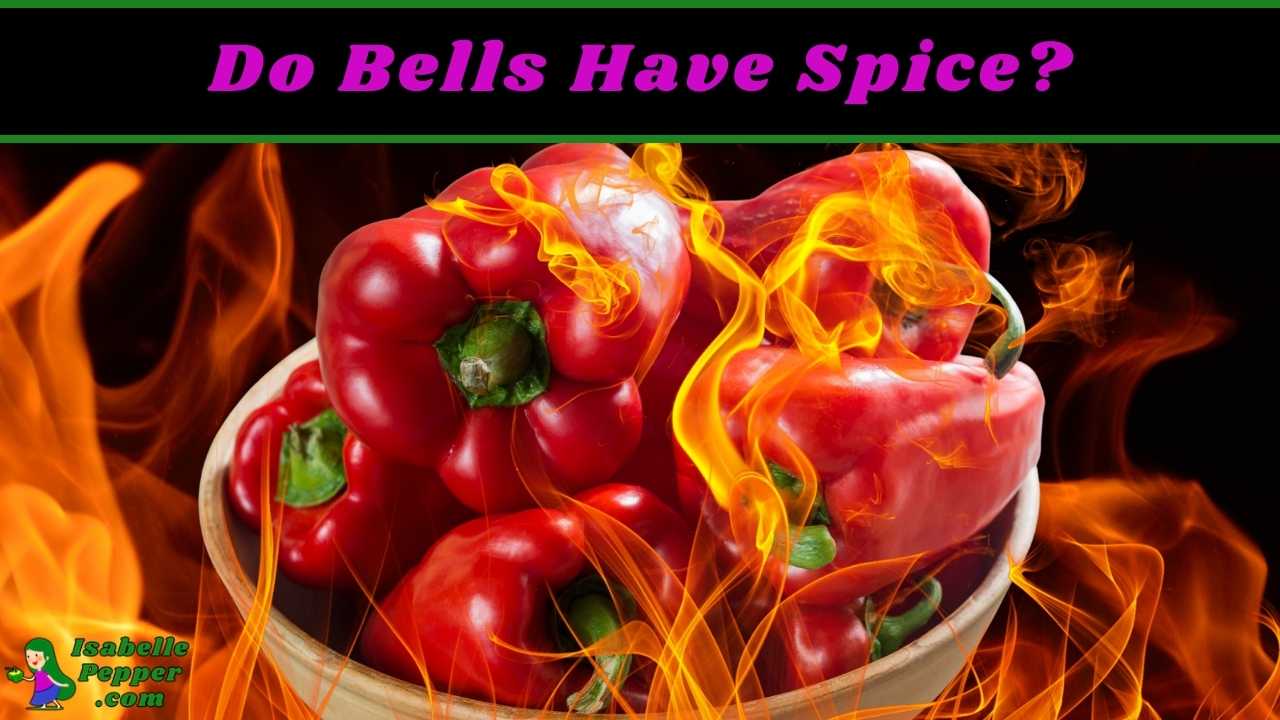Whether you’re roasting them, stuffing them, adding them to salads, or using them as a base for sauces, bell peppers are a versatile addition that can elevate the taste and appearance of your dishes.
However, what if you find yourself without green bell peppers or need an alternative due to allergies or preferences?
In this article, we’ll explore various bell pepper substitutes that can closely mimic the flavors and textures of bell peppers, ensuring your culinary creations remain delicious and satisfying.

Importance of Bell Pepper Substitutes
Bell pepper substitutes play a pivotal role in cooking, catering to various needs and enhancing culinary creativity.
Whether you lack fresh bell peppers, face allergies, or seek new flavors, suitable substitutes ensure taste and aesthetics remain intact.
These alternatives maintain flavor profiles, accommodate dietary requirements, and offer room for culinary experimentation.
They elevate everyday cooking by adding diversity and adaptability to your dishes, making them a valuable tool for every cook’s arsenal.
What Can I Substitute for Bell Pepper?
Cubanelle Peppers
Cubanelle peppers are a fantastic substitute for bell peppers due to their mild tanginess and slightly sweet flavor.
These elongated peppers are usually green or yellow-green, and they shine when roasted, fried, or used as a stuffing.
Their thin walls make them quick to cook, whether sautéed with other vegetables, included as toppings on pizzas, or used to add a delightful crunch to salads.
Cubanelle peppers complement a range of dishes with their mild and pleasant taste.

- Explanation: Elongated peppers with yellow-green color
- Usage: Roasted, fried, stuffed, salads, pizza toppings
- Flavor and Texture: Mildly tangy, hint of sweetness when cooked
- Dishes: Stuffed Cubanelle peppers, sautéed with vegetables, sandwich fillings
Pimentos
Pimentos, characterized by their heart-shaped appearance, offer a sweet and silky option for replacing bell peppers.
When roasted, they undergo a transformation, turning sweet and velvety. These peppers are often used to create spreads, dips, and sauces due to their high sugar content when roasted.
Adding roasted pimentos to hummus, blending them into pasta sauces, or using them as stuffed appetizers can bring a unique and delightful flavor to your dishes.

- Explanation: Sweet heart-shaped peppers
- Usage: Roasted for spreads, dips, sauces
- Flavor and Texture: Sweet and silky when roasted
- Dishes: Hummus with blended pimentos, pasta sauces, stuffed appetizers
Anaheim Peppers
Anaheim peppers, with their thick walls and mild fruity flavor, serve as an excellent substitute for bell peppers.
These peppers are versatile, perfect for roasting, grilling, sautéing, or even stuffing.
The slightly sweet and fruity taste of Anaheim peppers, combined with their ability to maintain a crunch when cooked, makes them suitable for various dishes.
From roasted salsas to stuffed Anaheim peppers, these chilies can add depth to your culinary creations.

- Explanation: Mildly fruity, thick-walled peppers
- Usage: Stuffed, roasted, grilled, sautéed, in sauces and soups
- Flavor and Texture: Mildly sweet and fruity, thicker flesh
- Dishes: Stuffed Anaheim peppers, roasted salsas, stir-fries
Poblano Peppers
Poblano peppers bring an earthy flavor with a touch of spiciness to the table, making them a flavorful alternative to bell peppers.
Roasting, grilling, sautéing, or stuffing poblano peppers reveals their unique taste profile. When cooked, they develop a subtle sweetness that balances the earthiness.
Their thicker skin and mildly spicy nature make them stand out in dishes like stuffed peppers, enhancing both flavor and texture.

- Explanation: Earthy flavor with mild spiciness
- Usage: Roasting, grilling, sautéing, stuffing
- Flavor and Texture: Earthy and slightly spicy, thicker skin
- Dishes: Stuffed with cheese or meats, charred for flavor, Mexican dishes
Jalapenos
For those who appreciate a bit of heat, jalapenos are an excellent bell pepper substitute. These medium heat chilies offer a spicy kick while maintaining a hint of fruity flavor.
Roasted, cooked, pickled, stuffed, or used raw in salads, jalapenos bring both spice and crunch to various dishes.
Their versatility allows them to be used in nachos, salsas, tacos, or spicy sauces for a fiery and exciting culinary experience.

- Explanation: Medium heat chilies with spiciness
- Usage: Roasted, cooked, pickled, stuffed, raw in salads
- Flavor and Texture: Spicy with fruitiness, adds crunch when raw
- Dishes: Nachos, salsas, tacos, spicy sauces
Onions
While not peppers themselves, onions can be a surprisingly suitable substitute for bell peppers, especially when sautéed or fried.
When cooked, onions lose their sharpness and develop a mild sweetness, enhancing the flavor profile of your dishes.
Their ability to provide crunch and mellowed sweetness makes them a complementary ingredient in stir-fries, pasta dishes, fajitas, and sandwiches.

- Explanation: Sweetness when cooked
- Usage: Fried, sautéed for mellowed sweetness
- Flavor and Texture: Sweet and slightly savory when cooked
- Dishes: Stir-fries, pasta dishes, fajitas, sandwiches
Zucchini
Zucchini, with its mild vegetable flavor and firm texture, offers a versatile alternative to bell peppers. Whether fried, sautéed, or stuffed with fillings, zucchini adapts well to a variety of dishes.
It has a slight nuttiness that complements other flavors while maintaining a firmness when cooked.
Incorporating zucchini in stir-fries, grilled vegetable medleys, or as stuffed zucchini boats adds both color and flavor to your meals.

- Explanation: Mild vegetable flavor, versatile
- Usage: Fried, sautéed, stuffed with fillings
- Flavor and Texture: Mild with slight nuttiness, firm when cooked
- Dishes: Stir-fries, grilled vegetables, stuffed zucchini boats
Pepperoncini
Pepperoncini peppers bring a mild tanginess with a hint of heat, making them an interesting substitute for bell peppers.
Often pickled, these peppers retain their crunch and tang even after preservation.
Their flavor pairs well with salads, antipasto platters, and sandwiches, where their tanginess and slight heat can provide a unique twist to the dish.

- Explanation: Mild and tangy peppers
- Usage: Pickled, sliced as toppings
- Flavor and Texture: Tangy with hint of heat, maintains crunch
- Dishes: Salads, antipasto platters, sandwiches
Broccoli
Though not a pepper, broccoli’s mildly earthy flavor and crunch offer a different texture to your dishes.
Perfect for stir-fries, casseroles, pasta dishes, and salads, broccoli adds depth and nutritional value.
When cooked, its earthy taste becomes mellow, and its firmness adds a satisfying crunch to various recipes.

- Explanation: Mildly earthy flavor with crunch
- Usage: Stir-fries, casseroles, pasta, salads
- Flavor and Texture: Earthy and mildly sweet, crunchy when cooked
- Dishes: Pasta primavera, stir-fries, quiches
Mushrooms
Mushrooms contribute an earthy and umami-rich flavor that can be a flavorful substitute for bell peppers.
Their savory taste and meaty texture lend themselves to sautéing and grilling, enhancing their flavor profile.
From pasta sauces to risottos and pizzas, mushrooms provide a hearty and satisfying element to a variety of dishes.

- Explanation: Earthy, umami-rich taste
- Usage: Sautéed, grilled for enhanced flavor
- Flavor and Texture: Earthy and savory, meaty texture when cooked
- Dishes: Pasta sauces, risottos, pizzas, stir-fries
Sichuan Peppers
Sichuan peppers offer a unique substitution option with their citrusy flavor and tingling spiciness.
While not directly replacing bell peppers, these peppers can be used sparingly to provide a distinct numbing sensation and spiciness to dishes.
Used in stir-fries, noodles, and Chinese-inspired recipes, Sichuan peppers add a novel layer of flavor and sensation to your culinary creations.

- Explanation: Citrusy, tingling spiciness
- Usage: Used sparingly for tingling sensation
- Flavor and Texture: Citrusy, numbing, distinct spiciness
- Dishes: Stir-fries, noodles, Chinese-inspired recipes
Bok Choy
Bok choy’s sweet and crunchy taste lends itself to being used as an unexpected substitute for bell peppers.
With tender green leaves and crisp stems, bok choy is versatile in various dishes.
Whether used in stir-fries, Asian-inspired dishes, or simply as a side dish, its sweetness and crunch can contribute a refreshing element to your meals.

- Explanation: Sweet and crunchy taste
- Usage: As a crunchy component in dishes
- Flavor and Texture: Sweet and crunchy, tender green leaves and stems
- Dishes: Stir-fries, Asian-inspired dishes, side dish
You Can Also Substitute Bell Peppers for Bell Peppers
I know it sounds dumb but hear me out...
While it might initially sound counterintuitive, substituting one type of bell pepper for another within a recipe can actually yield surprisingly nuanced results.
This unconventional approach to bell pepper substitutions allows you to explore the subtle variations in taste, color, and texture that different stages of ripeness can bring to your dishes.
The Different Color Options:
Each color of bell pepper—green, yellow, orange, and red—represents a distinct level of ripeness and flavor development.
Green bell peppers, harvested while still unripe, offer a slightly bitter and grassy flavor, along with a satisfying crunch. As the peppers ripen, their color changes, and so does their taste profile.
Yellow and orange bell peppers, for instance, are the matured versions of green peppers, boasting a sweeter and fruitier taste.
On the other end of the spectrum, red bell peppers are the fully ripe versions, offering a pronounced sweetness and an almost tangy undertone.
You can find a full guide to different color bell peppers and how the compare by reading this blog post on my site!
How to Use the Different Flavors:
By intentionally using different colored bell peppers as substitutes within recipes, you can fine-tune the taste of your dishes.
For instance, if you’re preparing a stir-fry that traditionally calls for green bell peppers, consider using yellow or orange ones instead.
This substitution can impart a delightful sweetness to the dish, adding a layer of complexity to the flavors.
Similarly, swapping red bell peppers into a recipe that originally specified green ones can bring about a sweeter and more intense taste, altering the dish’s overall character.
Add Aesthetic to Your Dishes!
In addition to flavor, the color variation among bell peppers can also enhance the visual appeal of your meals.
The vibrant reds, oranges, and yellows can lend a burst of color to your dishes, making them more visually appealing and appetizing.
This aesthetic transformation can be particularly striking in salads, where the rich hues of ripe bell peppers can contribute to a visually captivating presentation.
In essence, while substituting bell peppers for bell peppers might seem like a straightforward swap, it opens up a realm of possibilities for culinary creativity.
How to choose a bell pepper substitute.
Selecting the right bell pepper substitute involves a thoughtful consideration of several factors that contribute to the overall taste and quality of your dish.
As you navigate through the array of options, keep in mind that each substitute brings its own unique characteristics to the table.
First and foremost, examine the flavor profile of the substitute. Are you aiming for a similar sweet and crisp taste, or are you open to exploring new flavor dimensions?
The texture is equally vital; some substitutes, like Cubanelle peppers or zucchini, offer a satisfying crunch akin to bell peppers, while others might bring a distinct texture that adds a delightful twist.
Compatibility is key. Depending on the dish you’re preparing, you might seek a substitute that either seamlessly blends into the flavors or one that imparts a complementary contrast.
Think about the cooking method you’re using—roasting, sautéing, stuffing—and how well the substitute holds up under heat.
Furthermore, consider how the substitute’s color and appearance contribute to the visual appeal of the dish.
Whether you’re enhancing a stir-fry, crafting a pizza topping, or elevating a pasta sauce, the ideal bell pepper substitute aligns with your culinary goals while maintaining the essence of the original recipe.
What Seasonings and Foods Complement Bell Peppers?
- Seasonings: Bell peppers have a naturally sweet and slightly tangy flavor that pairs well with a variety of seasonings. Some popular seasonings that complement bell peppers include garlic, onion powder, cumin, paprika, oregano, thyme, basil, and parsley. These seasonings enhance the peppers’ taste and create a balanced flavor profile.
- Herbs: Fresh herbs such as cilantro, parsley, and chives add a burst of freshness to dishes containing bell peppers. Their vibrant flavors contrast nicely with the peppers’ sweetness and contribute to a well-rounded taste.
- Cheese: Cheeses like feta, goat cheese, cheddar, and mozzarella work harmoniously with bell peppers. They provide creaminess and a savory element that complements the peppers’ sweetness, making them great for stuffed pepper recipes or pizza toppings.
- Proteins: Bell peppers pair well with various proteins, including chicken, beef, pork, and seafood. Their sweet and tangy flavor can balance out the richness of proteins and add a refreshing touch to meat-based dishes.
- Citrus: Citrus fruits like lemon, lime, and orange can add a zesty and tangy dimension to bell peppers. Squeezing some citrus juice over dishes with bell peppers can brighten up the flavors and create a lively contrast.
- Tomatoes: The natural acidity and sweetness of tomatoes complement bell peppers beautifully. Together, they form a classic duo in many dishes, from sauces and salsas to stuffed peppers and Mediterranean-inspired salads.
- Rice and Grains: Bell peppers work well with rice and various grains, such as quinoa, couscous, and bulgur. They add color, flavor, and a hint of sweetness to grain-based dishes, creating a satisfying balance.
- Spices: Spices like black pepper, red pepper flakes, and chili powder can add a touch of heat to bell peppers, enhancing their overall flavor profile. Just be cautious not to overwhelm the peppers’ natural taste.
- Vinegars: Balsamic vinegar, red wine vinegar, and apple cider vinegar can provide acidity and depth to dishes featuring bell peppers. Their tanginess complements the peppers’ sweetness and adds complexity to the flavors.
- Olive Oil: High-quality olive oil enhances the natural flavors of bell peppers and contributes to their overall taste. Drizzling olive oil over roasted or grilled peppers can amplify their deliciousness.
- Nuts: Nuts such as almonds, pine nuts, and walnuts can add a satisfying crunch and nutty flavor to bell pepper dishes. They create a delightful textural contrast that complements the peppers’ sweetness.
acouplecooks.com created a great resource showcasing some amazing recipes using bell peppers. Check it out here
FAQs
Can I Substitute Red Bell Pepper for Green?
Yes, you can substitute red bell pepper for green. Red bell peppers have a sweeter flavor and are fully ripe versions of green bell peppers.
Keep in mind that their color difference might slightly affect the appearance of the dish, but the flavor substitution works well in most recipes.
What Pepper is Closest to a Bell Pepper?
Cubanelle peppers are the closest to bell peppers in terms of flavor and texture. They have a mild, slightly sweet taste and thin walls, making them a suitable substitute in various dishes.
Can I Substitute Poblano for Bell Pepper?
Yes, you can substitute poblano peppers for bell peppers.
Poblano peppers have a similar shape and earthy flavor to bell peppers, with the added benefit of a mild spiciness.
Keep in mind that poblano peppers are slightly hotter than bell peppers, so adjust the quantity to match your desired level of heat in the dish.
How Can I Substitute Green Bell Pepper in a Smoothie?
Substituting green bell pepper in a smoothie requires careful consideration due to its distinct flavor.
If you’re aiming to maintain the vibrant color and mild earthiness that green bell peppers provide, consider using ingredients like cucumber, spinach, or zucchini.
These vegetables offer a subtle, refreshing taste and a smooth texture that won’t overpower the smoothie’s overall flavor profile.
Additionally, using green apples or kiwi can provide a touch of sweetness while maintaining the green hue.
Remember to balance the flavors and textures to achieve a satisfying smoothie experience.
How Can I Substitute Red Bell Pepper for Tomato Sauce?
Substituting red bell pepper for tomato sauce can be a creative twist in your recipes.
While red bell peppers offer a mildly sweet and fruity flavor, they lack the tanginess of tomato sauce.
To create a similar texture and color, you can roast red bell peppers and blend them into a smooth puree.
However, to mimic the acidity and tartness of tomato sauce, consider adding a splash of vinegar or lemon juice to the bell pepper puree.
Keep in mind that the final result may not exactly replicate the taste of tomato sauce but can still bring a unique and delightful element to your dishes.
Can I Use Paprika Instead of Bell Pepper?
Paprika is a ground spice made from dried red peppers, so it can add a similar flavor profile to dishes as bell peppers.
However, paprika is more concentrated and offers a deeper, smokier taste compared to the fresh and crunchy texture of bell peppers.
While paprika can work as a seasoning to enhance the flavor, it cannot fully replicate the texture and structure of bell peppers in recipes.
Can You Substitute Celery for Green Pepper?
Yes, you can substitute celery for green pepper to some extent.
Celery can provide a crunchy texture similar to bell peppers, but its flavor is distinctively different, with a mild, slightly bitter and earthy taste.
While celery can add texture and a vegetable element to dishes, keep in mind that it won’t replicate the exact flavor of green bell peppers.
Consider the overall flavor profile of your dish before using celery as a substitute.
Can I Substitute Yellow Pepper for Green Pepper?
Yes, you can substitute yellow pepper for green pepper. Yellow peppers are slightly riper than green peppers, offering a sweeter and fruitier taste.
While the color change indicates a difference in flavor, yellow peppers still share the same crunchy texture and general versatility in cooking.
Keep in mind that the sweetness of yellow peppers might affect the overall taste of your dish, so adjust your recipe accordingly if necessary.
Conclusion
Bell pepper substitutes offer a world of flavors and textures to explore in your culinary endeavors.
Whether you’re accommodating dietary restrictions, exploring diverse flavors, or simply working with what’s at hand, the array of substitutes ensures that your dishes retain their deliciousness and visual appeal.
From the vibrant hues of yellow, orange, and red bell peppers to the depth of flavor provided by Anaheim, poblano, and jalapeño peppers, the world of substitutes presents endless opportunities to experiment and delight your palate.




